Coastal foraging - introduction
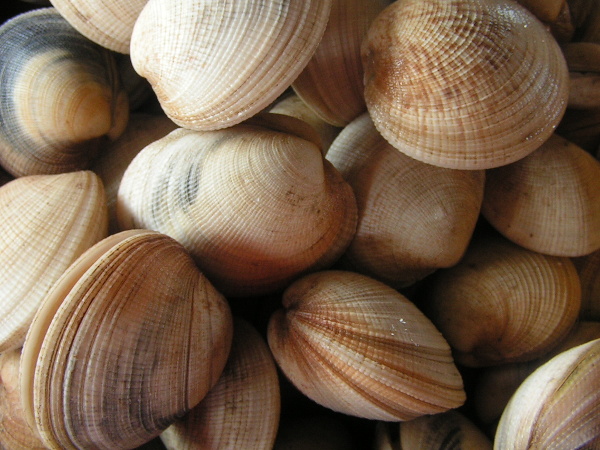
“When the tide is out, the table is set” – Native American proverb
Contents
What is coastal foraging?
Coastal foraging covers a wide variety of wild food available at the coast – plants, seaweeds, shellfish and crustaceans etc. We’re not including information about the broad topic of fishing in this introduction.
Coastal foraging can be done everywhere from sea cliffs and dunes, out to the low tide point in the rocks, gullies and pools, as well as mudflats and estuaries. Coastlines offer a particularly abundant and one of the most dependable habitats for foragers. For these reasons, throughout our history humans have often chosen to live by the sea. Midden piles of discarded shells from ancient coastal foragers are the evidence that remains, and attest to the importance of the seashore as a plentiful food resource.
Some coastal food remains common in our diets today, such as prawns and crabs, and even carragheen seaweed hidden as a thickener in anything from toothpaste to desserts; whilst others, still delicious and nutritious, like winkles have fallen off the radar somewhat.

It’s worth mentioning the changing state of our seas, due to warming, acidification and pollution. Our oceans are suffering, and the creatures and plant-life within them are impacted. Because of this, it’s important to always harvest sustainably. It’s also important to note that with our current population, our coastlines couldn’t provide enough foraging for everyone.
What are the benefits of coastal foraging?
Coastal foraging can provide you with an abundance of truly nutritious food. In particular, shellfish offer a very high energy return with little input, and other than some low-cost (or even home made) equipment, it is free! Seaweed can be easily harvested and is high in vitamins and minerals.
If we harvest sensitively, then gathering wild food can be of great benefit to the environment, as we can avoid farmed or commercially-produced foods that require land, fuel, and other inputs. For example, if we must eat prawns, far better to have hand-harvested them ourselves than to buy prawns trawled from the ocean, with large amounts of other creatures thrown away as ‘by-catch’.

Being near the sea, watching the tides, creatures, and plant life of the ocean can be a wonderful experience, away from screens and literally diving into another world of seaweeds and starfish, swimmers and scuttlers. As long as you time it right, it can be a truly relaxing experience, and nourishing to body and mind, as well as a wonderful way to connect with nature.
Some forageable species are also invasive, such as the Pacific oyster. So if we harvest these, we can help restore native populations.
Consuming wild food can instill a greater respect for the environment, reconnecting us to the origins of our food, and illustrating our dependency on nature for survival. It also highlights the importance of seasonality and offers an alternative to our current globalised food system, where we can buy anything at any time of year.

What can I do?
There are plenty of courses and books available in coastal foraging (see resources), or you might find someone local out on the shore you can talk to. You’ll need to plan your trip around the tides, and not just for safety reasons. A lot of coastal foraging happens at low tide – when pools, gullies, sands and rocks are exposed and accessible, along with the creatures and plants that live there.

Safety
Coastal foraging carries a number of risks that inland foraging simply doesn’t. It’s worth taking the sea, and it’s changeable weather seriously, but don’t let it put you off. Check the weather before you go and particularly avoid disorientating sea mists or storms. It’s very important to be aware of the tide times, and the speed of the incoming tide. It’s safest to head out as the tide is receding, giving you plenty of time before it turns. Also, know if you are heading out on a ‘spring tide’, around a new or full moon, when there is the greatest difference between high and low water. It’s generally a good idea to have more than one exit planned, and make sure you aren’t going to get cut off with the incoming tide.
For scrambling on rocks covered in spiky barnacles and slippery seaweed, beach shoes or sandals are great. For mudflats you’ll need wellies – all those shells are sharp and can cut your feet. Something else to be aware of is the venomous weever fish, often in shallow water or rocky areas. If stood on, its spines could cause you a few hours of intense pain. A possible risk in mudflats and estuaries is quicksand, where you can suddenly find yourself stuck. Of course also be careful of cliffs, both foraging on the top, and for rockfalls below.

Because of the risks, it’s generally best to go with someone, and take a phone. It’s good practice to tell someone where you’re going and when you plan to be back. Always be sure of the identification of any wild food before you eat it – this particularly goes for the plants. Make sure you are foraging from clean beaches. And beware of algal blooms, especially when foraging bivalves such as clams and oysters, which filter sea water for their food, and are particularly susceptible to contamination. Algal blooms can be the cause of serious shellfish poisoning. Ask local fishermen or your local Port Health Authority, or check local social media sites.
Coastal plants
There are some wild food plants that are only found on coastlines and estuaries, such as sea kale and marsh samphire, while others, although not specifically coastal, seem to thrive on coasts. It’s worth reading the safe foraging tips on our Wild Food page. Marsh Samphire is very popular, and delicious raw or steamed, especially with fish. Found in tidal mudflats, it can be challenging to harvest, but well worth it.

Some of the most abundant wild greens can be found around the coast, such as the evergreen sea beet, or the young shoots of sea kale. Coastal plants are often more succulent than inshore plants, as it’s their defense mechanism against the salty air. Sea buckthorn, as the name implies, grows well near the coast and provided you can brave the sharp spikes, offers some of the most medicinally beneficial berries you can forage – full of vitamins and omega oils; it makes a wonderful immune boosting winter tonic.
Seaweed
There isn’t a widespread culture around eating seaweed here in the UK, although Wales has ‘laverbread’. Seaweed is more commonly thought of as a food from the Far East, especially in Japanese cuisine.
There are thousands of types of seaweed, and of the 640 or so growing around the UK shores all are edible, except one that grows too far out to forage. So long as you follow the general safety guidelines you can go round nibbling and tasting without worrying about poisoning yourself. Some are more delicious and nutritious than others, and some are really worth taking the time to collect. Seaweed is actually classified as a marine algae, not a plant, and contains a whole array of vitamins, trace minerals and amino acids, as well as iodine. Iodine is great for our bodies, in moderation. All the seaweeds you are likely to find are quite different and need processing, and cooking differently.

There are some great harvesting guidelines and code of conduct here. Legally, you need permission from the landowner to take seaweed, and a licence for harvesting commercially. The coast of Britain is owned by the Crown, private landowners or conservation charities. In general most landowners won’t mind a little seaweed harvesting for personal consumption. Pick from a clean shoreline far away from sewage outlets and check there are no algal blooms. A rocky beach is great habitat to find a variety of seaweeds – and there will be less sand in your bounty. Head out as the tide is going out, and keep an eye on the sea and the time.
Gather fresh seaweed that is still attached and growing, not the floating or washed up fronds that could be old. It’s important not to pull up the seaweed by its ‘holdfast’ (where it attaches to a surface). The holdfast is like the roots, and it can regrow from there, so cut rather than pull. You can use a sharp knife, but walking around with scissors is safer and they cut better.
Think about harvesting sustainably. Choose seaweed species that are growing plentifully. And only harvest a small amount (no more than a third) from each ‘plant’, and each area, leaving enough to ensure a healthy population. Harvesting during their active growth season can allow for quicker recovery – this varies for different seaweeds, but spring and summer is generally best; and avoid trampling on other species.

Take something to carry your harvest easily and remember you may find yourself scrambling over rocks with it. A basket or string or cloth bag works well as the holes let the sea water drain out. It can be a good idea to take separate bags for different species so you don’t have to sort them at home. Once home, if you want to store your harvest you’ll need to dry it. Some require washing before drying to remove sand and debris. You can store dried seaweed for a few years in airtight containers. Look for recipes on how to use each individual seaweed – it varies widely. The green seaweeds like gutweed and sea lettuce are great dried and crushed for sprinkling over dishes. Kelp is great added to stocks, but rather tough to eat, unless you deep fry it and create crunchy salted crisps. Dulse is one of the most versatile and nutritious seaweeds – great added to dishes such as pies, quiches, or dried and sprinkled over meals.
Shellfish
Generally you have a right to fish and collect shellfish in tidal waters, though there are some laws on quantity, time of year, place etc. for gathering some shellfish, and some have a ‘minimum landing size’. Do always check what you are doing is legal! John Wright’s Edible Seashore book provides you with most of the information you need.
Molluscs: there are some risks associated with gathering shellfish. In order to avoid food poisoning, you must always cook them, which will kill off any nasties. The raw oysters you buy are often farmed and thoroughly checked for viral and bacterial infection. Cooking doesn’t destroy algal toxins from an algal bloom, or remove heavy metals, so you need to be sure the beach is clean, and there are no algal blooms nearby. Some suggest only collecting during months with an ‘r’ in them, as these are often colder and less likely to have algal or bacterial toxins.
The great thing about molluscs is they don’t move very fast, so are relatively easy to ‘catch’, though sometimes hard to find. Some you can just pick up from rocks – like periwinkles or mussels. Although small, periwinkles can be found in great abundance and are easy to gather and to cook – just boil for about 5 minutes then extract them from their shells.

Mussels can be found in great abundance, and are one of the most delicious of shellfish. The best way to cook them is steamed with wine and cream and some herbs, French style. Other molluscs take a little more work in finding – such as cockles or razor clams. Razor clams hide themselves well under the sand, and so the challenge is to find them, or more specifically their ‘keyhole’ shaped holes in the sand. Pour salt over the hole, and if you’re lucky the clam will appear out of the sand, which you must quickly grab.
Cockles also live under the sand, in the inter-tidal zone between low and high tide. You can use a rake, or your hands to dig around just under the surface for the round shells, and in a good cockle bed you can gather a fair amount in little time. Because of the sand, it’s best to purify them overnight in salt water to wash out as much grit as possible. As with all foraging, it’s important to be conscious of ensuring the continued abundance of the population. This doesn’t apply to invasive species, however. One such species – the Pacific oyster, which due to sea temperature rises is beginning to thrive in our previously too-cool waters, is available to harvest as much as you wish! Our native oyster is now rare, and should not be harvested – if you’re fortunate enough to find one.

Crustaceans: for the more determined seashore foragers, there are crabs, lobsters and prawns. Many people might remember childhoods wading in rock-pools pulling out small crabs and shrimps, or ‘crabbing’ off piers. Go as the tide is heading out. Some of the best spots for these creatures are rock-pools and rocky shorelines in the inter-tidal zone. There are various techniques employed to catch these more mobile creatures. The first is to snorkel or walk around until you see one and bravely grab it with your hands, avoiding the pincers of course.

Another is to put out some kind of trap like a lobster pot. This is only allowed in certain areas, so check first. Put your traps out at low tide and make sure they are securely attached. Wait 24 hours and then with excitement and anticipation, pull your pots up and see what you have. It’s possible to catch lobsters, crabs, prawns and even fish in traps. Make sure you comply with minimum landing sizes, and any other seasonal or location-specific rules. If a female has eggs, or ‘roe’, leave her in the sea to hatch her offspring. If a lobster has a ‘v’ notch in it’s tail it has been marked by commercial fishermen as a good breeder and should be left.
For prawns you will need a ‘prawn net’ and some patience as you skim the murky depths and seaweed-sheltered spots in pools. Otherwise a prawn pot is effective and used in the same way as a lobster pot. Prawns will keep a few hours in salt water, and are best cooked by placing them straight into boiling water. There are debates about the most humane way to kill crustaceans – whether to put them into boiling water or to destroy their ganglia (nerve clusters) – by inserting a knife or screwdriver in a specific way for crabs, and another for lobster. It will be up to you how you choose to despatch these creatures.

If you don’t kill them immediately on the beach, they need to be kept cool and in salt water, and killed and eaten as soon as possible – for humane treatment of the animal, and for your own health in consumption. Whatever you’re harvesting, only take home what you intend to eat or store; it can be easy to get carried away with the abundance and end up with more than you can eat. Forage only for personal consumption. Commercial foraging has regulations and for good reason, to ensure the population remains healthy and abundant. The law around what you can take and when varies from place to place and seasonally. There are lots of great recipes for cooking foraged seafood online or in books.
Specialist(s)
Thanks to Craig Evans of Coastal Foraging and Charlie Loram of The Old Way for information.
The specialist(s) below will respond to queries on this topic. Please comment in the box at the bottom of the page.

Craig Evans runs Coastal Foraging. He takes walks along the coasts of Carmarthenshire and Pembrokeshire and finds ingredients to cook up a feast right there and then – proving there are rich culinary pickings on the beach, from mussels to plants and crabs. His hope for the future is to educate the wider world about our fantastic coastal environment, to promote its conservation and to inspire people to pass on any knowledge gained down through future generations.


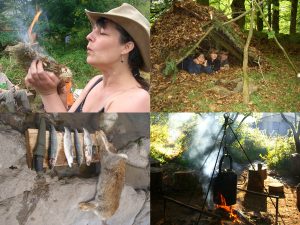
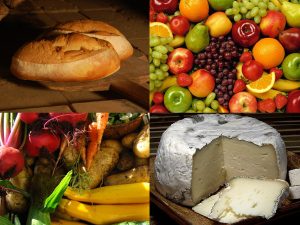

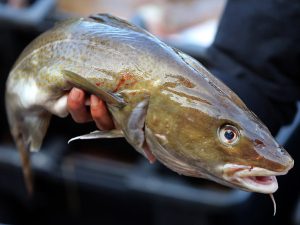
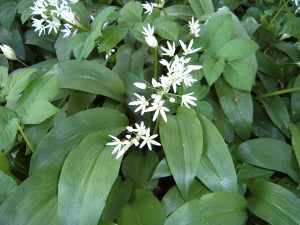
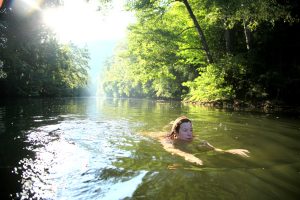
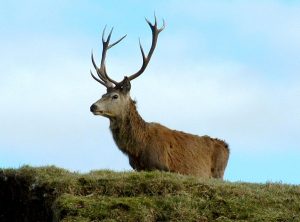
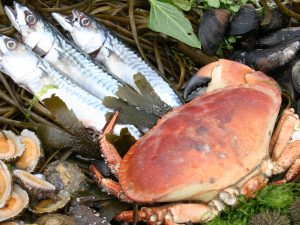
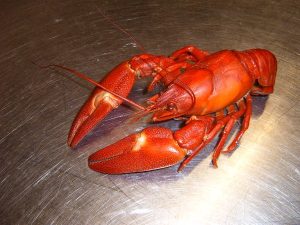
9 Comments
Do you need a permit to take lobsters or crabs home after foraging?
Only in some places in the UK Brian , but you must adhere to the size limits which can be found in your local fisheries website. There appears to be some confusion as to whether you need a “permit” in some areas. Personally I feel this is an infringement of our civil liberties, as this appears to be free and will serve no purpose in monitoring stocks, as both crabs and lobsters are not on any list of over exploitation, I don’t believe that an individual forager can have any detrimental effect on stocks. Good luck , kind regards Craig
Is there anywhere in Suffolk to forage for clams please? Our location is Felixstowe Suffolk England thank you from Austen
Do we allowed to forage in our area? I live in Portsmouth.
And where can we get documents or see that we need permits to forage our coastal?
Hi Viliame, I’m only familiar with the regulations of Wales. Perhaps you could try your local fisheries officer ,the Environment agency or a local Foraging business such as “Devon Wildlife Tours ” . I hope this helps- kind regards Craig
It is illegal and harmful to the environment to take attached seaweed. In the UK.
Hi Church, thank you for your comment . It is not illegal in the UK if you have the landowners permission. You can legally take an unrestricted amount of seaweed that is detached and washed up on the shore.- for fertilizer etc. As in any type of foraging , wild harvesting you should only take for your immediate needs and don’t take too much from one area. If you do harvest seaweeds , only take the top third , leaving the rest to grow from its holdfast. Feel free to visit the website of Car Y Mor, a seaweed farm I’m involved with and it is a community benefit organisation. I hope this helps. Kind regards Craig ( http://www.coastalforaging.co.uk)
Hi Church, thank you for your comment . It is not illegal in the UK if you have the landowners permission. You can legally take an unrestricted amount of seaweed that is detached and washed up on the shore.- for fertilizer etc. As in any type of foraging , wild harvesting you should only take for your immediate needs and don’t take too much from one area. If you do harvest seaweeds , only take the top third , leaving the rest to grow from its holdfast. Feel free to visit the website of Car Y Mor, a seaweed farm I’m involved with and it is a community benefit organisation. I hope this helps. Kind regards Craig ( http://www.coastalforaging.co.uk)
Hi could you recommend a good costal foraging book